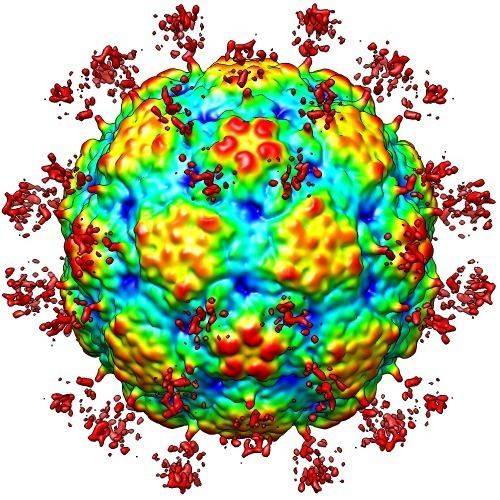Group Group IV ((+)ssRNA) Family Picornaviridae Higher classification Picornavirus | Scientific name Parechovirus Rank Genus | |
 | ||
Similar Picornavirus, Kobuvirus, Teschovirus, Aichivirus A, Astrovirus | ||
Parechovirus is a genus of viruses in the order Picornavirales, in the family Picornaviridae. Bank voles and humans serve as natural hosts. There are currently only two species in this genus including the type species Parechovirus A, also called human parechoviruses and Parechovirus B, more commonly known as the Ljungan virus. Diseases associated with this genus include: human parechoviruses: mild, gastrointestinal or respiratory illness, have been implicated in cases of myocarditis and encephalitis; Ljungan virus: may be a zoonotic virus associated with diabetes and intrauterine fetal death in human.
Contents
- Parents warned new parechovirus causes brain damage
- Taxonomy
- Structure
- Life Cycle
- Clinical
- History
- References
Parents warned new parechovirus causes brain damage
Taxonomy
Group: ssRNA(+)
Six types of human parechovirus have been identified: human parechovirus 1 (HPeV1, formerly echovirus 22), human parechovirus 2 (formerly echovirus 23), and human parechoviruses 3, 4, 5 and 6.
A total of 15 genotypes are currently recognised.
Structure
Viruses in Parechovirus are non-enveloped, with icosahedral, spherical, and round geometries, and T=pseudo3 symmetry. The diameter is around 30 nm. Genomes are linear and non-segmented, around 7.3kb in length.
Life Cycle
Viral replication is cytoplasmic. Entry into the host cell is achieved by attachment of the virus to host receptors, which mediates endocytosis. Replication follows the positive stranded RNA virus replication model. Positive stranded RNA virus transcription is the method of transcription. The virus exits the host cell by lysis, and viroporins. Bank voles and human serve as the natural host.
Clinical
Human parechoviruses cause mild, gastrointestinal or respiratory illness, but have been implicated in cases of myocarditis and encephalitis. Human parechoviruses are commonly spread and more than 95% of human cases are infected early in life, within two to five years of age.
Parechovirus B has been proposed as a zoonotic virus, associated with diabetes and intrauterine fetal death in humans. However, the data regarding these features are currently limited and need to be confirmed.
Parechovirus is a Biosafety Level 2 organism.
History
The first parechoviruses (E22 and E23) were isolated in 1956, and recognized as a new genus in 1996. Parechovirus B was first isolated from bank voles (Myodes glareolus, formerly Clethrionomys glareolus) in the mid-1990s.
Human parechovirus type 3 (HPeV3) was found in at least 20 U.S. young infants in 2014. Those numbers include a set of identical triplets from central Wisconsin, who contracted the virus and were diagnosed nearly two months later after a flurry of tests, as this was the first known case in those health systems. The 2014 outbreak is a higher number than expected, and is thought to be linked to maternal-fetal transmission.
